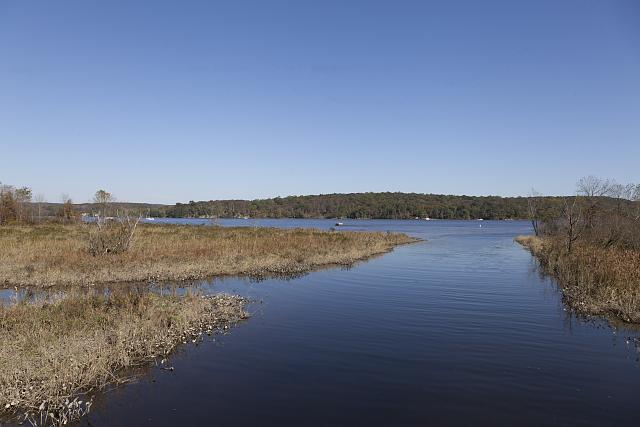The town of Old Saybrook lies at the mouth of the Connecticut River. A seemingly ideal location for commercial development, shallow waterways and shifting sandbars made water navigation hazardous and prevented Old Saybrook from ever becoming a major port city. While saved from commercial port development, the town’s waterways and pristine natural habitats faced an even greater threat from pollution that upstream towns and river-front factories sent down the Connecticut River, which passes through Old Saybrook on its way to Long Island Sound.
Connecticut’s industrial past has always threatened the natural environments that lie along the state’s numerous waterways. Nowhere is this more evident than in the devastation wrought on the Connecticut River. In the 1965 documentary film, The Long Tidal River, narrator Katharine Hepburn noted that by the mid-20th century the Connecticut River had a reputation for being “the world’s most beautifully landscaped cesspool.” Her statement echoed that of the New England Interstate Water Pollution Control Commission, which 10 years earlier had designated the Connecticut River from Holyoke Dam in Massachusetts to Middletown, Connecticut, as a Class D waterway mostly “suitable for transportation of sewage and industrial wastes… and for power, navigation, and certain industrial uses.”
River Rehab
In 1965, Senator Abraham Ribicoff sponsored a bill to preserve the river through the creation of hiking trails, conservation lands, and dams to create reservoirs for boating. The plan required residents of river towns to allow their lands to become part of a large park system. While Ribicoff’s plan ultimately failed, it did raise new awareness about the importance of preserving the Connecticut River’s resources and led to the creation of the Connecticut River Gateway Commission in 1973. Since that time, the commission has determined building standards for riverfront land in eight towns, including Old Saybrook.
As Old Saybrook continued to grow, however, water quality remained a divisive issue among local residents and officials. In order to improve groundwater quality in the area, state officials ordered the construction of a sewage treatment plant in Old Saybrook. The idea met with significant resistance from local residents who feared the potential damages of overflows and land development for the project. Town officials fought legal battles with the Connecticut Department of Environmental Protection throughout much of the 1980s and ’90s until they reached an agreement that included greater monitoring of, and improvements to, local septic systems.
Today, the Connecticut River is showing signs of improvement. It is home to numerous birds of prey, including osprey and bald eagles, and Atlantic salmon are a regular sight as they head upstream past Old Saybrook on their way to Massachusetts—something unheard of in the late 1960s and early 1970s.









